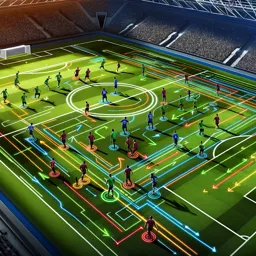While gymnastics is celebrated for its flips, twists, and jaw-dropping stunts, its artistic side is just as essential. Through choreography, musicality, and expressive movement, gymnasts turn athletic routines into captivating performances that blend sport and art.
Gymnastics as a Performing Art
Beyond raw athleticism, gymnastics thrives on creativity and visual storytelling. Through carefully designed routines, gymnasts connect with audiences emotionally while showcasing technical mastery.
Understanding Choreography in Gymnastics
- Choreography defines the sequence and composition of movements in a routine.
- Floor and balance beam performances merge acrobatics, dance, and expressive gestures.
- Choreographers tailor routines to a gymnast’s strengths, musical interpretation, and personality, ensuring uniqueness and impact.
The Importance of Musicality and Expression
- Musicality means moving in sync with music, emphasizing rhythm, tempo, and mood.
- Gymnasts use body language, facial expressions, and movement style to convey emotion or tell a story.
- Judges value routines that balance technical precision with emotional artistry.
Benefits of Emphasizing Artistic Elements
- Creativity: Encourages self-expression and innovative performance choices.
- Engagement: Captures audience attention and creates memorable experiences.
- Confidence: Builds stage presence and audience connection skills.
How to Enhance Artistic Expression
- Work with a Choreographer: Choose music, create story-driven sequences, and refine expressive details.
- Practice Dance and Acting: Improve movement quality, storytelling, and emotional range.
- Study Great Performances: Learn from elite gymnasts to inspire new artistic approaches.
Conclusion
Athletic skill may be the backbone of gymnastics, but artistry is its soul. Choreography and expression transform technical routines into unforgettable performances, allowing gymnasts to move beyond executing skills and start telling stories through motion.

































